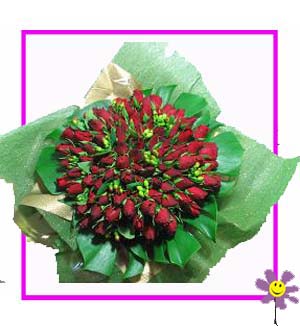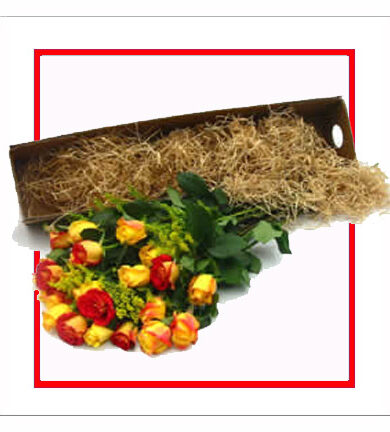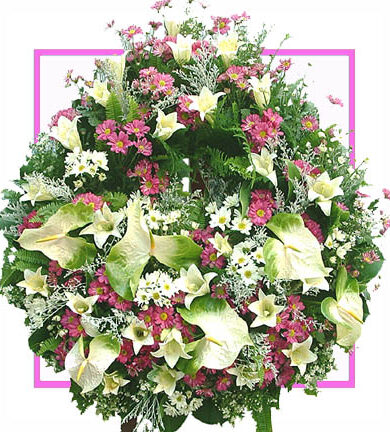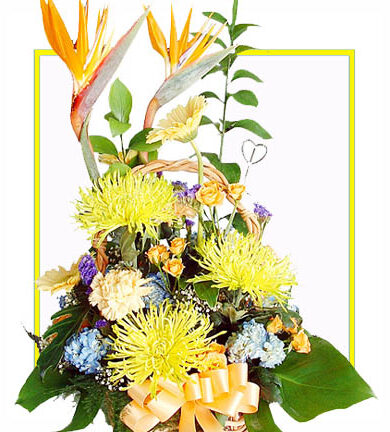Ashoka Siddapura, 30 km to south of Bellary, is an important archeological site where Emperor Ashoka’s edicts were found. The nearby Brahmagiri village is the ancient site of Ishila, one of Emperor Ashoka’s provincial capitals. One of his earliest rock edicts, dated circa 3rd century BC, written in Brahmi script in the Prakrit language and containing Kannada words, was discovered here. Nearby is Ramagiri, a hillock that has mythical associations with the epic Ramayana and a temple dedicated to Rameshwara built circa 926 CE. |
With cotton being one of the major agricultural crops around Bellary historically, the city has had a thriving cotton processing industry in the form of ginning, spinning and weaving plants. The earliest steam cotton-spinning mill was established in 1894 AD, which by 1901 AD had 17,800 spindles, and employed 520 hands. The city continues to thrive in this sector with one spinning mill and numerous cotton ginning and pressing mills, hand looms and power looms. Garment manufacture |
There are several legends explaining how Bellary got its name. The first is that a few devout traveling merchants halting in Bellar, could not find a Shiva Linga for their worship. They then installed a balla (a measuring cup or seru used to measure grain) upside down as a Shiva Linga and worshiped it. Eventually, that place was turned into a temple dedicated to Balleshwara or Shiva, which became distorted to Malleshwara’, and thus Bellary derives its name from this temple. |
The Arcelor Mittal group and Brahmani Industries Karnataka Ltd. have signed individual MoUs to invest in Steel plants in the district to invest 30000 crore (US$5.5 billion)and 36000 crore (US$6.6 billion)respectively, each to set up 6 million tonne per annum integrated steel plants with captive power plants on site. The projects of both companies will be located in and around Bellary district and will provide employment to 10,000 and 25,000 people, respectively. |
Daroji Bear Sanctuary is the only sanctuary in North Karnataka for the Indian Sloth Bear, and is located 50 km away from the city to the west. In October 1994, The Government of Karnataka declared 5,587.30 hectares of Bilikallu reserve forest as a Daroji Bear Sanctuary. However, the hills that stretch between Daroji of Sandur taluk and Ramasagar of Hospet Taluk in Bellary district have always been a host to the Indian Sloth Bears. |
Officially called the Golden Jubilee Park or the Dr. Rajkumar Park, this former slum area has been changed into a beautiful urban park due to the efforts of a succession of district commissioners starting with Ms. Gouri Trivedi and Ms. Manjula. The park features an artificial lake formed out of a disused granite quarry, a fountain with a daily musical show, a children’s play area and a variety of garden flora. Bellary Zoo |
These hills form the major natural lung spaces in the city, accommodating a host of flora including various species of Ber , the thorny Acacia (latronum, nilotica , pennata, ferruginea, catechu, chundra, etc. locally classified as jaali in Kannada), and the interesting Whirlnut (Gyrocarpus americanus Jacquini – illustration), which is not found elsewhere in the city. Kuntegadda Park |
Granite rocks and hills form a prominent feature of Bellary, and so granite quarrying is big business. The city is spread mainly around two huge rocky granite hills, the Ballari Gudda and the Kumbara Gudda (Gudda means hill in Kannada). These two hills are dominant features of the city and visible from every part of the city. |
Ballari Gudda has a circumference of nearly 2 miles (3.2 km) and a height of 480 feet (150 m). The length of this rock from north-east to south-west is about 1,150 ft (350 m). To the east and south lies an irregular heap of boulders, to the west there is an unbroken monolith, and the north is walled by bare, rugged ridges. Kumbara Gudda |
The numerous private and/or charitable hospitals in the city far outnumber the government facilities, though not in services provided. Historically, private facilities were of limited sophistication; however, this trend has been slowly changing, with private entrepreneurs investing much to acquiring more sophisticated infrastructure and expertise. |
The civilian Bellary Airport, located at the far end of the Cantonment area, has previously been serviced by Vayudoot and Air Deccan, linking Bellary with Bangalore, Goa and other nearby destinations. However, the services have been limited and inconsistent, with currently no commercial service available from this airport. Vidyanagar Airport |
Apart from these two hills, there are a number of other smaller granite hills within the city, the prominent among them being: 1.Kaate Gudda (wikimapia) opposite the Municipal Junior College, which also houses a water tank and pumping station. This hill is also nicknamed Kaage Gudda for its teeming flocks of Crows |
JSW Steel Ltd is a unit of Jindal Steels located at Toranagallu in Sandur taluk, 30 km from Bellary. JSW has further announced an investement of 15131 crore (US$2.8 billion) on capacity expansion and a captive power plant. Additionally, Jindal Saw Pipes plans to set up a steel plant in Bellary at 130.88 crore (US$24 million) |
Bellary is currently served by Vidyanagar Airport, located at the JSW Steel Ltd. complex, Toranagallu in Sanduru Taluk, 40 kilometres from Bellary. Bangalore based Charter airline, Taneja Aerospace and Aviation Ltd (TAAL), operate sightseeing charter flights to Hampi and Mysore since October 2002. International Airport |
The city is served by the North East Karnataka Road Transport Corporation (NEKRTC), offering travel services to almost all parts of Karnataka, many parts of Andhra Pradesh, Chennai, Pune and many parts of Maharastra. Additionally, a sizable number of private businesses offer travel services to important destinations. |
Bellary was ruled in succession by the Mauryas, the Satavahanas, the Pallavas, the Kadambas, the Badami Chalukyas, the Rashtrakutas, the Kalyani Chalukyas, the Southern Kalachuryas, the Sevuna Yadavas, and the Hoysalas, and also ruled briefly by the Cholas during the wars between Kalyani Chalukyas and the Cholas. |
Situated in a naturally arid region with semi-desert flora, the city has slowly accumulated greenery over the past few decades due to the collective efforts of the city residents, the regional forest department and the municipal council/corporation. The following is a short list of major green spaces in the city: |
Numerous neolithic archeological sites have been discovered around Bellary, such as the ash mounds at Sanganakallu, Budhihal, Kudithini, Tekkalakote, Hiregudda and Kupgal. The Sanganakallu settlement, spread over an area of 1,000 acres (4.0 km2), is one of the largest neolithic complexes known around Bellary. |
The main inter-city bus station is located in the now empty Nalla Cheruvu (???? ??????) basin. This is a new improvement over the older bus stand located near Gadigi Chennappa Circle. The old bus stand still serves state owned buses which connect rural locations and city buses. |
In 1808 AD, the ceded districts were split into the Bellary and Kadapa districts, and in 1867 AD the Bellary Municipal Council was created. Further, in 1882 AD, Anantapuram district was carved out of the Bellary District. The Maratha princely state of Sandur was surrounded by Bellary district. |
Established in 1981, this zoo and children’s park covers nearly 2.4 hectares and hosts a variety of fauna including Blackbuck, Spotted deer (Chital), Jackal, Crocodile, Indian Peafowl, Cobra, Python, Bear, Panther, Boar, etc. This zoo is due to be relocated to a new facility. Kaategudda Park |
This academic institute with an adjoining medical college hospital was commissioned in 1966, and currently has 680 beds. It is locally known as OPD, which refers to the Out Patient Department of the hospital located in the Cantonment. Women & Children’s Hospital or The District Hospital |
The second legend is that the city is named after Indra, the king of Gods, who slew a Rakshasa (demon) named Balla who lived nearby. Balla-ari means ‘enemy of Balla’ (ari – enemy in Sanskrit). The third legend derives the city’s name from the old Kannada word Vallari and Vallapuri. |
The city is host to a number of Hindu temples of varying antiquity, examples being the Bellary Durgamma temple in the Gandhinagar area, the Malleshwara temple in the Fort area, the Laxminarayana temple on Brahmin Street and the Yogini Kolhapuri Mahalakshmi temple at Vidyanagar. |
This is a major route for mining trucks transporting iron and manganese ore from the Sanduru hill ranges to the sea port at Mangalore and Karwar. This highway also connects the city to Hubli, Hospet and Hampi. State Highway 19, connecting Bidar to Srirangapatna. |
Yogini Kolhapuri Mahalakshmi temple at Vidyanagar, Bellary. Bellary Fort is a place of historical, archeological and geological interest. Daytime is most suitable for visits. The hill fort is illuminated on Sundays and days of national importance. |
The Municipal High School was bifurcated in the 1950s and the Municipal Muslim High School located in the Fort area was later renamed Moulana Abul Kalam Azad High School. Janaab Meer Mohammed Hussain became the headmaster of the new school. |
The old school building has been demolished to give way to a modern building. However, the facade of the older structure has been retained as a ‘heritage structure’. The adjoining convent and church remain intact. St. John’s School Complex |
2.Eeshwara Gudda , behind the Anaadi Lingeshwara Temple in Parvati Nagar-Shastri Nagar area. This has now been quarried extensively and almost flattened with all loose boulders removed, making way for residential occupation.(wikimapia) |
This school in the Cantonment was founded in 1885. In 1901, a technical class was run at the high school by the nuns of the Order of Good Shepherd, and the pupils were almost all Europeans or Eurasians. Wardlaw Composite Jr. College |
Most graduate education in Bellary falls under the jurisdiction of Gulbarga University and Visvesvaraya Technological University. The following is an abridged list of educational institutions of historical importance in the city: |
Raayadurga town in Andhra Pradesh, located 40 km from the city, features a hill fort of more antiquity than the Bellary Fort. The hill is also host to a wide variety of wild life, including peafowl. bears, jackals, and panthers. |
Donimalai, Sanduru and Narihalla Dam on the Sanduru hill range are places of natural beauty. The Kollur Mookambika Water Sports facility features boating and other water sports in the back waters of the Narihalla Dam. |
The 500 MW Bellary Thermal Power Thermal Station (BTPS) is located 19 km away from the city at Kuditini village. This is the second thermal plant in Karnataka, after the Raichur Thermal Power Thermal Station. |
The city is surrounded by numerous iron and steel plants, owing to the availability of huge deposites of iron and manganese ore in the Sanduru hill ranges and surroundings. The following is an abridged list : |
This highway connects the city to Raichur, Gulbarga and Bidar in the north and Bangalore and Mysore in the south. State Highway 132, connecting the city with Adoni, Kurnool, Vinukonda, Guntur, Vijayawada. |
Malepaty Sreenivasulu Setty – One of the oldest bankers, philanthropist; politician and theosophist; served as a treasurer of congress, Member of Z.R.U.C.C and currently a political advisor to Congress. |
Perfect flowers to express your emotionsShop Now














































































































































































